One Of All-time Greats.
One of all-time greats.


RAFAEL NADAL / CHAMPION / USO ‘17
More Posts from Vcsupertramp and Others

When you hit your elbow against something, but that specific point of your elbow

Lord of the Rings was published in the fifties, and largely written in the forties. Tolkien’s opinions on society and morality and technology are at some points genuinely more conservative than what I’m comfortable with. And yet, the more I think about it, the more sure I am that Tolkien actually deconstructs most of the clichéd fantasy tropes he supposedly originates. Some examples.
The long-lost heir is not the hero, he’s a side character who deliberately uses himself as a decoy.
The real hero actually fails in his quest, his goodness and determination and willpower utterly fail in the face of evil, and the world is saved by a series seemingly unrelated good deeds.
The central conflict is not between destroying the world and preserving it. An age of the world will come to an end, and many great and beautiful things will perish, whether the heroes win or lose. The past may have been glorious, but preserving it is impossible, and returning to it is impossible, time has passed and the world has moved on. The king returns, but the elves are gone and magic fades from the very substance of Middle Earth. The goal is not to preserve the status quo, the goal is the chance to rebuild something on the ruins.
Killing the main villain seems to instantly solve the problem, eradicate all enemies and fix the world, except it doesn’t, not wholly, since the scouring of the Shire still has to happen.
Also, the hero gets no real reward, and what he gets, he cannot really enjoy. He is hurt by his ordeal, and never fully recovers.
There is a team of heroes, a classic adventuring party, except the Fellowship is together for less one sixth of the series. The Fellowship is intact from the Council of Elrond to Gandalf’s death, four chapters. The remaining eight are together until Boromir’s death, an additional six chapters. This is nothing compared to LOTR’s length of sixty-one chapters, if I count correctly.
Tolkien is not classic high fantasy. If you actually think about it, there is very little magic. The hobbits’ stealth is not magical, most elven wonders are not unambigously magical, wizards are extremely rare, and even Gandalf hardly uses magic if you compare him to the average DnD wizard. Most magic is indistinguishable from craft, there is no clear difference between a magic armor and a very good armor, between magic bread and very good bread, between magical healing and competent first-aid plus a few kind words.
TLDR: Stop praising recent fantasy for deconstructing Tolkien if they’re “deconstructing” something Tolkien has never actually constructed.
hey remember when jane austen, a woman, referred to a character named richard as having “never done anything to entitle himself to more than the abbreviation of his name” in 1817. yeah me too.

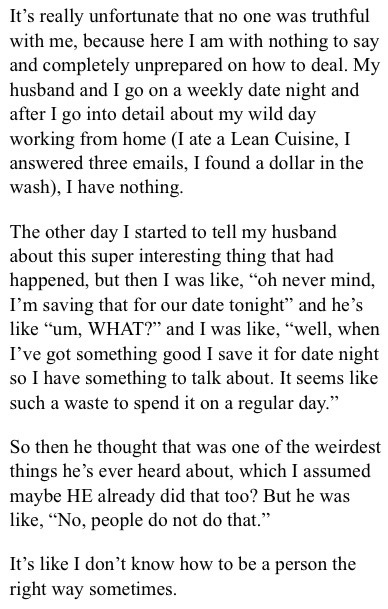

I love it when I click on a recipe link because it sounds yummy and instead of a recipe I get a several page dissertation on a food blogger’s boredom with her marriage and lies she was told in childhood
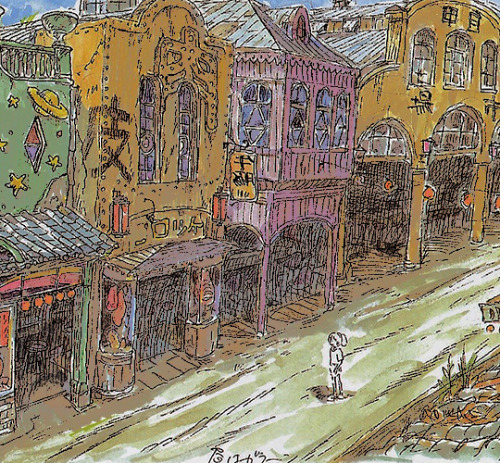
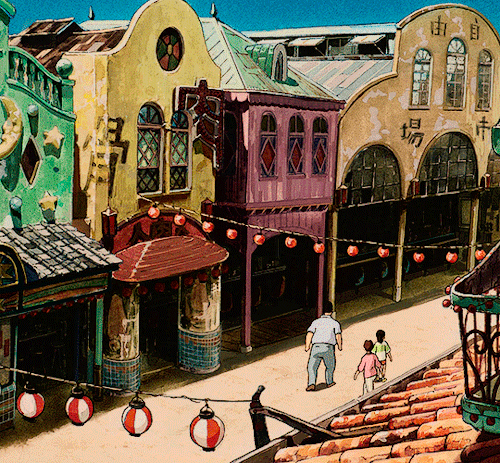
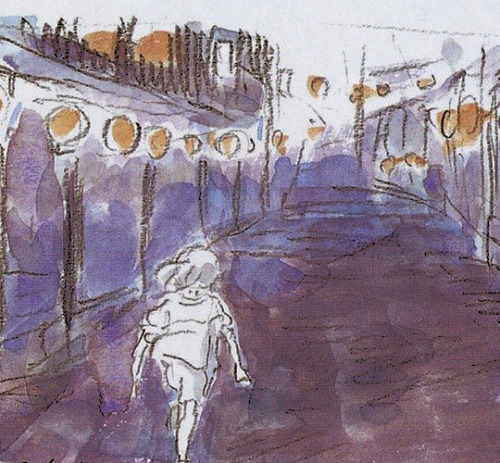
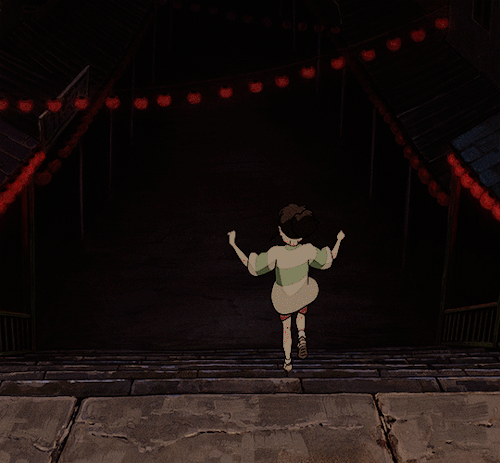
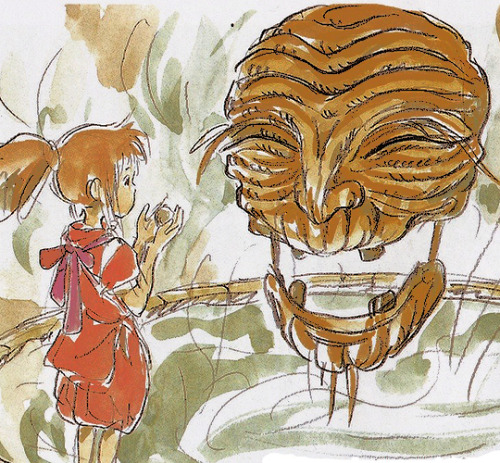

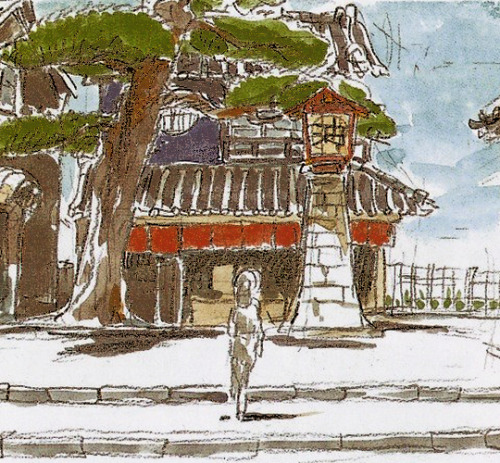
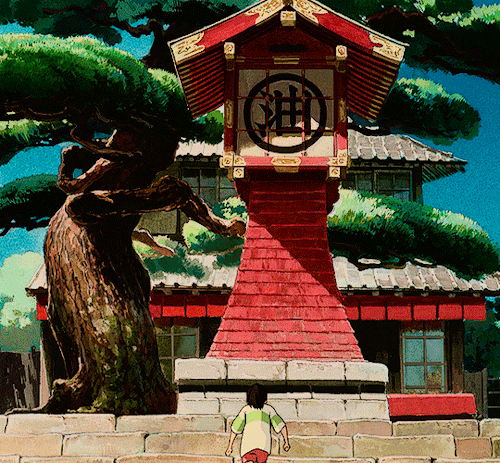

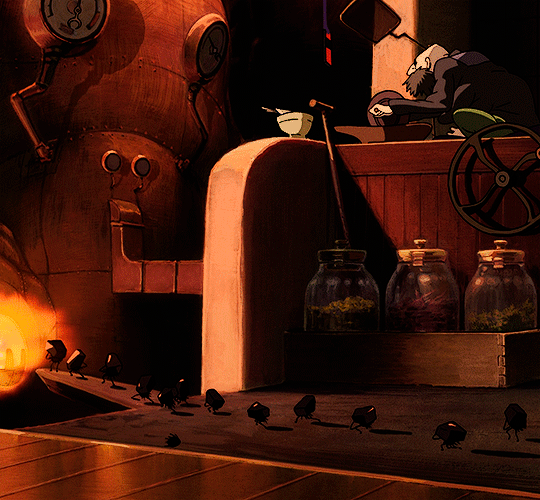
SPIRITED AWAY (2001) dir. Hayao Miyazaki
concept sketches / final result
Most common shots in filmmaking
Cinematography - Shot Types
Establishing Shot - a shot that establishes the setting of the scene. Usually a wide shot.

Titanic (1997)
Master Shot - A shot that includes all the actions of a scene. Usually a wide shot.

American Beauty (1999)
Two-Shot - A shot that has two subjects next to each other. Sometimes shows camaraderie.

Pulp Fiction (1994)
Over-the-Shoulder (OTS) - a shot of one subject that includes the shoulder of the character opposite the subject. Makes the scene feel more crowded or the characters closer.

The Dark Knight (2008)
Point-of-View (POV) - a shot from the perspective of a character, animal, or sometimes object. Can help convey what a certain character is feeling.

Reservoir Dogs (1992)
Tracking Shot - a shot that follows the action, usually on a dolly.

The Shining (1980)
Dutch Angle - a shot that is tilted to give the effect that something is not right. Also called: German angle; Dutch tilt; canted angle; oblique angle

Mission Impossible (1996)
High Angle - an angle that is shot from above the subject. Makes the subject appear small or powerless.

Matilda (1996)
Low Angle - an angle that is shot from below the subject. Makes the subject appear large and powerful.

Citizen Kane (1941)
When he asks me to explain him what is a start-up

It's not that difficult to understand!
The longer you have to wait for something, the more you will appreciate it when it finally arrives. The harder you have to fight for something, the more priceless it will become once you achieve it. And the more pain you have to endure on your journey, the sweeter the arrival at your destination. All good things are worth waiting for and worth fighting for.
-
 ilzhbetta-blog liked this · 7 months ago
ilzhbetta-blog liked this · 7 months ago -
 michelle-ma-cherie liked this · 7 months ago
michelle-ma-cherie liked this · 7 months ago -
 hydroblader reblogged this · 7 months ago
hydroblader reblogged this · 7 months ago -
 rainbowintheskyf1 liked this · 7 months ago
rainbowintheskyf1 liked this · 7 months ago -
 pablocarrenobusta reblogged this · 7 months ago
pablocarrenobusta reblogged this · 7 months ago -
 cmblorbo reblogged this · 7 months ago
cmblorbo reblogged this · 7 months ago -
 unsteadyunsubtle liked this · 7 months ago
unsteadyunsubtle liked this · 7 months ago -
 muirneach liked this · 7 months ago
muirneach liked this · 7 months ago -
 papaya-on-top liked this · 7 months ago
papaya-on-top liked this · 7 months ago -
 sinnatek liked this · 7 months ago
sinnatek liked this · 7 months ago -
 rgrfederer reblogged this · 7 months ago
rgrfederer reblogged this · 7 months ago -
 lavanderkisses liked this · 7 months ago
lavanderkisses liked this · 7 months ago -
 rgrfederer liked this · 7 months ago
rgrfederer liked this · 7 months ago -
 iamsigningmylifeaway reblogged this · 7 months ago
iamsigningmylifeaway reblogged this · 7 months ago -
 iamsigningmylifeaway liked this · 7 months ago
iamsigningmylifeaway liked this · 7 months ago -
 mardybumlog liked this · 2 years ago
mardybumlog liked this · 2 years ago -
 captainbunny1981 liked this · 6 years ago
captainbunny1981 liked this · 6 years ago -
 brdogaa liked this · 7 years ago
brdogaa liked this · 7 years ago -
 franchufeuillassier liked this · 7 years ago
franchufeuillassier liked this · 7 years ago -
 urbanlanguage reblogged this · 7 years ago
urbanlanguage reblogged this · 7 years ago -
 awkward-silence-nini reblogged this · 7 years ago
awkward-silence-nini reblogged this · 7 years ago -
 la-decimoterceras reblogged this · 7 years ago
la-decimoterceras reblogged this · 7 years ago -
 beggedandborrowedtime reblogged this · 7 years ago
beggedandborrowedtime reblogged this · 7 years ago -
 beggedandborrowedtime liked this · 7 years ago
beggedandborrowedtime liked this · 7 years ago -
 valentina2anastasia liked this · 7 years ago
valentina2anastasia liked this · 7 years ago -
 ferrarhirhi reblogged this · 7 years ago
ferrarhirhi reblogged this · 7 years ago -
 iker-is-everything reblogged this · 7 years ago
iker-is-everything reblogged this · 7 years ago -
 vazkroos reblogged this · 7 years ago
vazkroos reblogged this · 7 years ago -
 epsilon-scorpii91 liked this · 7 years ago
epsilon-scorpii91 liked this · 7 years ago -
 queenofthelavalamps liked this · 7 years ago
queenofthelavalamps liked this · 7 years ago -
 raihansuarez-blog liked this · 7 years ago
raihansuarez-blog liked this · 7 years ago -
 top-tennis reblogged this · 7 years ago
top-tennis reblogged this · 7 years ago -
 tylerparsons liked this · 7 years ago
tylerparsons liked this · 7 years ago -
 earthsmightiestdorks liked this · 7 years ago
earthsmightiestdorks liked this · 7 years ago -
 alwaysbemylovee reblogged this · 7 years ago
alwaysbemylovee reblogged this · 7 years ago -
 just-a-happy-camper liked this · 7 years ago
just-a-happy-camper liked this · 7 years ago -
 vcsupertramp reblogged this · 7 years ago
vcsupertramp reblogged this · 7 years ago -
 icecubedd reblogged this · 7 years ago
icecubedd reblogged this · 7 years ago -
 lilliesofthevalleys liked this · 7 years ago
lilliesofthevalleys liked this · 7 years ago -
 hockeydilf reblogged this · 7 years ago
hockeydilf reblogged this · 7 years ago -
 soulsister101 liked this · 7 years ago
soulsister101 liked this · 7 years ago -
 topgeardog liked this · 7 years ago
topgeardog liked this · 7 years ago
Wanderer, there is no way, you make the way as you go... Just a wanderer enjoying the rollercoaster.
176 posts
